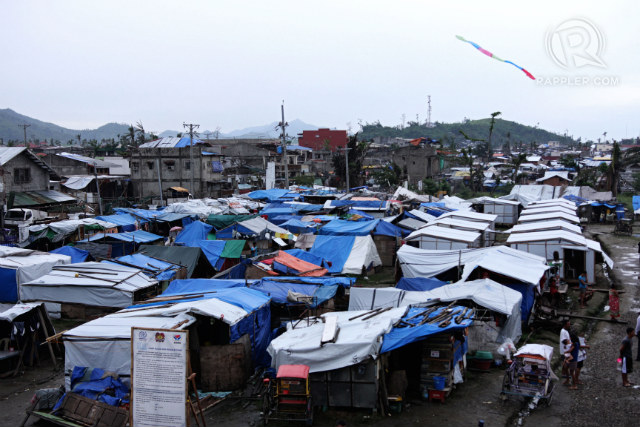SUMMARY
This is AI generated summarization, which may have errors. For context, always refer to the full article.

MANILA, Philippines – Some 4,000 hectares of government land have been identified by the government as safe resettlement sites for displaced victims of Super Typhoon Yolanda (international name Haiyan).
This was the update given by Rehabilitation Secretary Panfilo “Ping” Lacson on Thursday, June 5 during a forum on national land use planning.
This amount of land is enough space for the 214,000 housing units needed to resettle the thousands of survivors who lost their homes to the storm.
“We identified that we need 1,272 hectares for the more than 200,000 displaced families. So we can choose from the 4,000 hectares the needed 1,272,” he told reporters.
The identification of the 4,000 hectares is the product of ongoing efforts of the Department of Science and Technology (DOST) and Mines and Geosciences Bureau (MGB) under the Department of Environment and Natural Resources (DENR) to come up with a multiple hazard map that identifies areas safe for development and infrastructure in all 171 Yolanda-struck cities and municipalities.
Lacson gave assurances that the lands identified are government lands and will not conflict with any private rights to lands.
Families who were living in high-risk areas before Yolanda will be prioritized for relocation to these resettlement sites, added Lacson.
While these resettlement sites are being built, survivors will be moved out of their tents and into “transitional” shelters.
“They may be temporary but they can still last 15 years,” said Lacson about a type of transitional shelter being provided by aid agencies.
Fast-tracking rehab
Lacson said he had DENR Secretary Ramon Paje’s assurance that they would complete the map by the end of June.
President Benigno Aquino III, in a previous Cabinet meeting, pressed Lacson and the other secretaries to fast-track the completion of the map because it will serve as basis for the local and national master rehabilitation plans.
“Nothing moves unless DENR and DOST get their act together and do the multi-hazard mapping. Otherwise, all our actions are only interim,” said Lacson.
A multi-hazard map shows the risks and dangers specific parcels of land may be exposed to because of geographic proximity to faults, volcanos and landslide-prone areas.
These maps can also show if an area is vulnerable to storm surge, drought, flood, soil erosion and soil liquefaction (the loosening of soil beneath the surface).
Rehabilitation cannot begin without this kind of map available to all Yolanda-hit LGUs. Mayor Sandy Javier of Javier town in Leyte illustrated this to participants in the forum.
“Donors who want to give housing ask us, ‘Do you have property?’ So we buy property. We go to the National Housing Authority for funding to develop the land.
“But they tell us we need a Comprehensive Land Use Plan with geo-hazard mapping. With all the steps we have to undertake, it is just physically impossible for us without 3rd party intervention.”
The multi-hazard map would fast-track this process, providing LGUs with the data they and aid agencies need to identify areas safe for resettlement.
Dangers in tents
The call for resettlement areas, even transitional ones, has reached a new sense of urgency because of the dangers faced by a majority of Yolanda victims still living in tents.
According to the Department of Social Welfare and Development, around 130,000 Haiyan survivors still lived in tents as of April.
Last May, a fire that razed a tent in Tacloban City killed 7 people, including a 4-month-old baby. Overwhelming heat in these “tent cities” and the approaching rainy season pose even more risks for Yolanda refugees, said Lacson.
Lacson said he hopes to finish at least 85 to 95% of rehabilitation by the time the term of the Aquino administration ends in June 2016. – Rappler.com
Add a comment
How does this make you feel?
There are no comments yet. Add your comment to start the conversation.